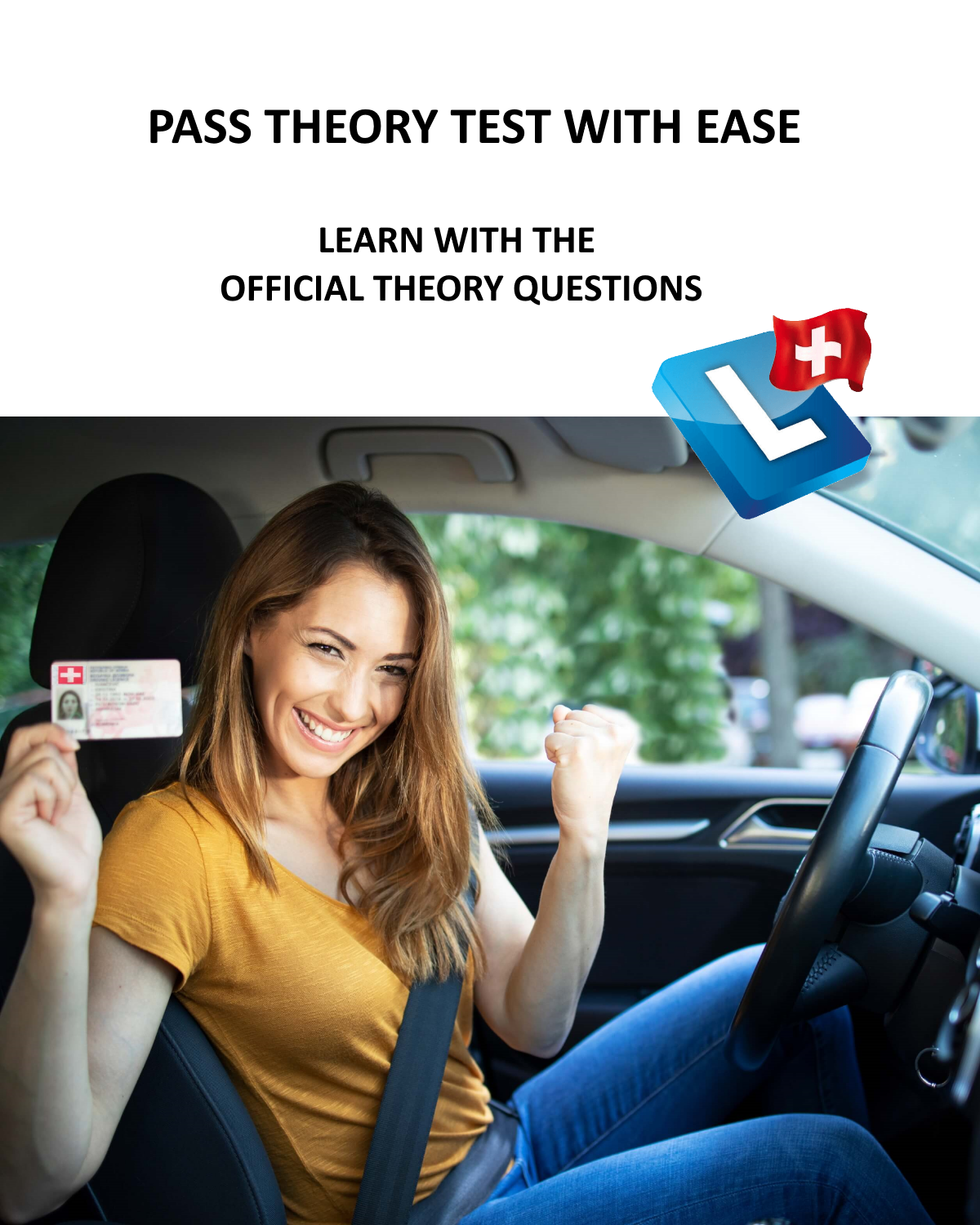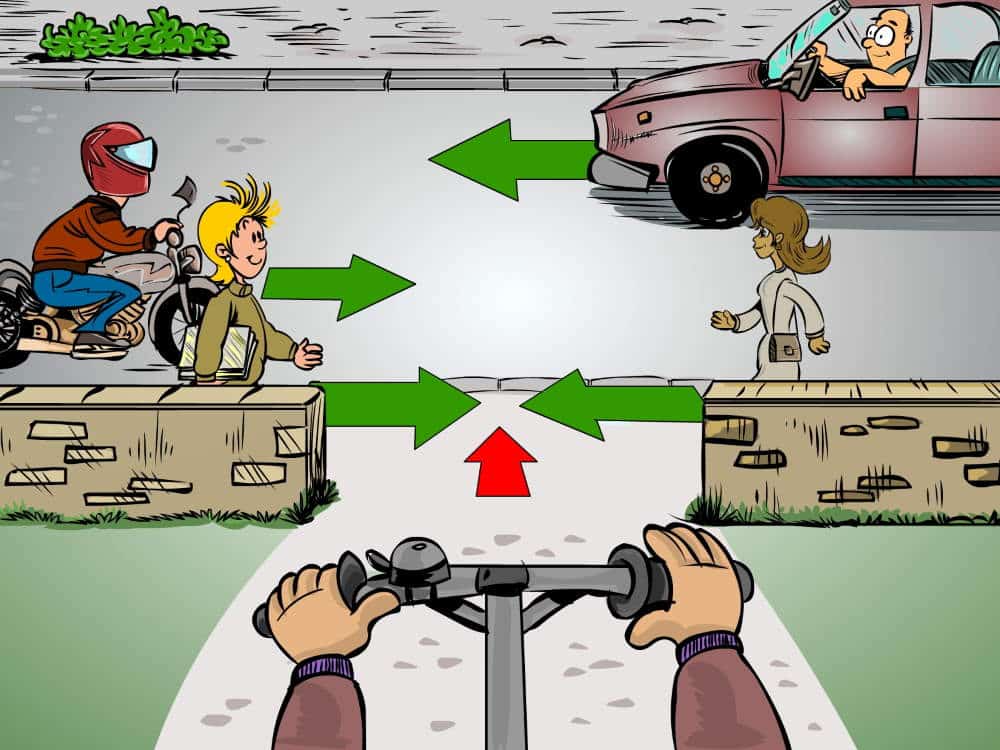Cyclists, cycle paths and cycle lanes
Drivers of other vehicles may drive on the bicycle lane delimited by a broken line, provided that they do not obstruct bicycle traffic as a result.
“Extended bike lanes” are “bike lanes” with an associated set-up area, which may be marked in front of traffic signals in special cases. In the extended area marked with the symbol of a bicycle, bicyclists are allowed to line up side by side when the light is red, and then proceed to the junction when the light is green
The “ban on bicycles and motorcycles” prohibits riding bicycles and motorcycles, and the “ban on motorcycles” prohibits riding motorcycles with the engine running.
Drivers of motor vehicles, motorcycles and bicycles are not allowed to let go of the steering device, and cyclists are not allowed to let go of the pedals.
Cyclists of at least 16 years of age may carry a child of at most seven years of age in a safe child seat. The seat must protect the child’s legs and must not hinder the cyclist.
Bicyclists 16 years of age or older may carry a child seven years of age or younger in a secure child safety seat. The seat must protect the child’s legs and must not hinder the cyclist.
Motorcyclists and cyclists must sit in the seat intended for them. Children may use a bicycle only if they are able to pedal in a seated position.
Motorcyclists and cyclists are not allowed to carry objects that make it impossible to signal or endanger other road users. Carried objects must not be wider than 1 m
Cyclists are allowed to pass on the right side of a motor vehicle column, if there is enough free space; slalom-like driving in front is prohibited. They must not hinder the continuation of the motorcade and in particular must not place themselves in front of stopped vehicles.
The drivers of motorcycles must respect the regulations for cyclists and, in order to avoid noise, the regulations for drivers of motor vehicles.
Drivers of bicycles and motorcycles must not ride alongside other bicycles or motorcycles. However, provided that other traffic is not hindered, riding side by side in pairs is permitted:
– in closed formation of more than ten bicycles or motorcycles;
– in dense bicycle or motorcycle traffic;
– on cycle paths and on signalized cycle paths on secondary roads.
Any person entering a main or minor road from factory, yard or garage exits, from dirt roads, bicycle paths, parking lots, gas stations and the like, or over a sidewalk, must yield the right of way to the users of such roads

“Bike lanes” shall be delineated by a broken or unbroken yellow line. The unbroken line may neither be crossed nor driven over
Outside of junctions, e.g. at entrances to properties, drivers of other vehicles must give way to cyclists when crossing cycle paths or cycle lanes If a cycle path runs at a distance of no more than 2 m along a carriageway for motor vehicle traffic, the same rules of priority apply to cyclists at junctions as to drivers of vehicles on the adjacent carriageway. Drivers of motor vehicles on the adjacent carriageway must give way to cyclists when turning.
Cyclists must give way when leaving a cycle track or cycle lane onto the adjacent carriageway and when leaving the cycle lane when overtaking.
Bicycles with trailers are allowed on the bike lane only if they do not obstruct other bicycle traffic. Pedestrians and disabled persons with elevators may use bicycle lanes where there is no sidewalk or footpath
The sidewalk is reserved for pedestrians, the bicycle path for cyclists.
Bicyclists must use the bicycle lanes and paths
Cyclists must not be pulled by vehicles or animals.
The “cycle path” signal obliges the drivers of single-track bicycles and motorized bicycles to use the path marked for them. Where the cycle track ends, the signal “End of cycle track” may be placed
Riders of motorcycles shall not ride side-by-side or adjacent to bicycles or motorcycles. Bicyclists and motorcyclists are not allowed to ride next to motorcycles


